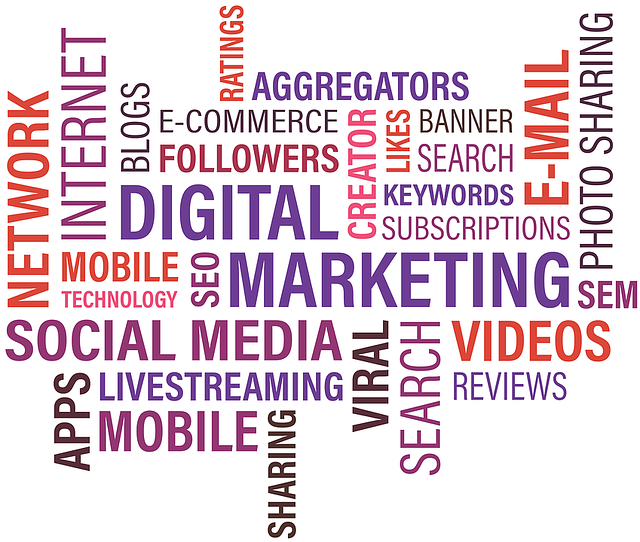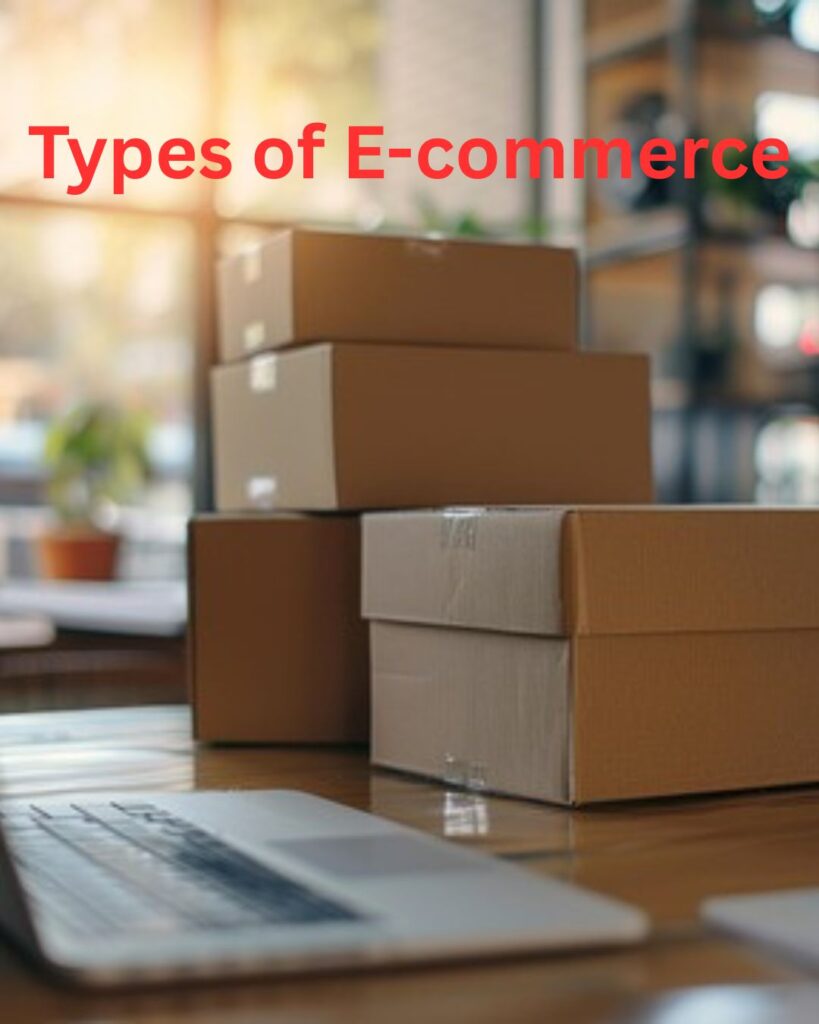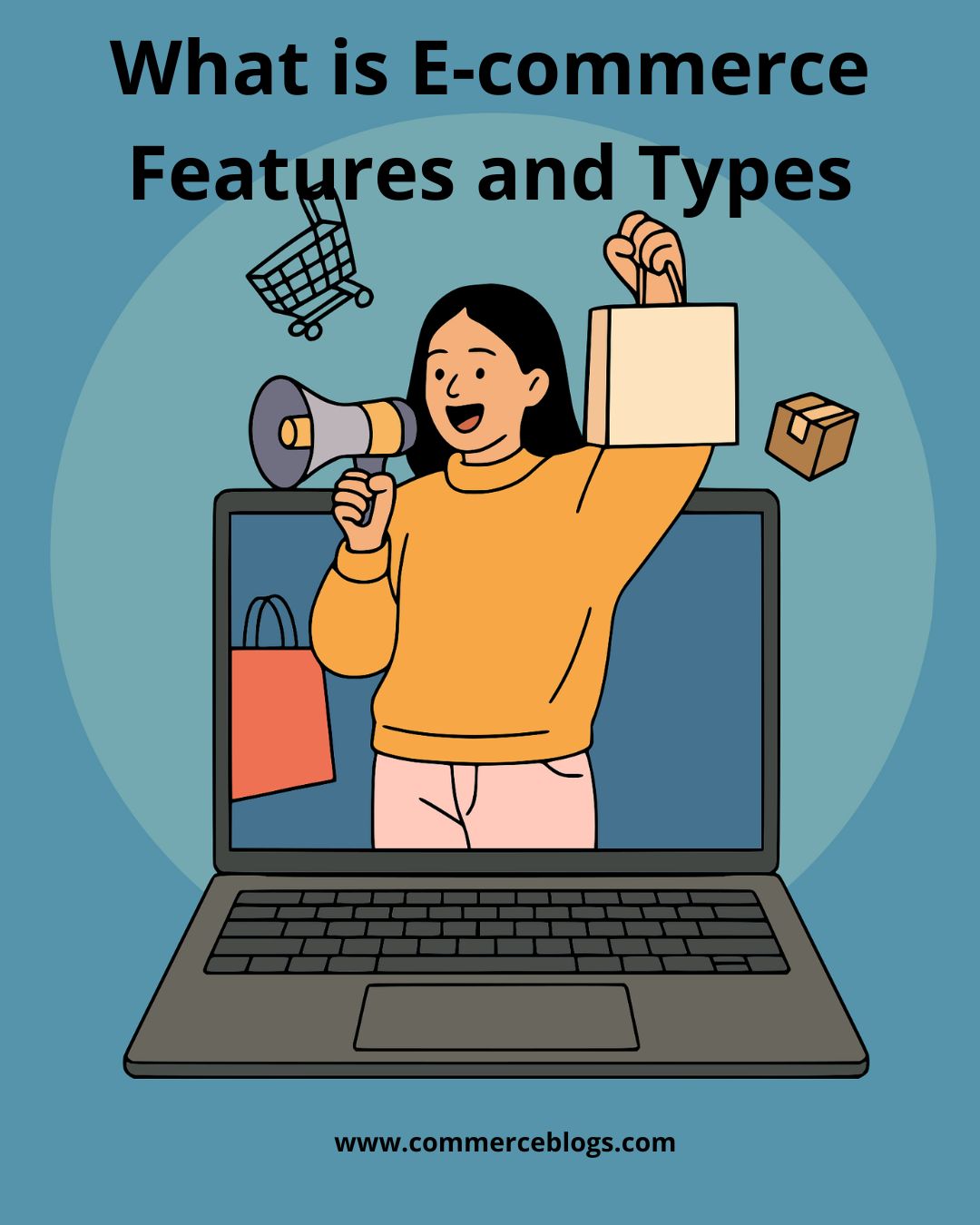Introduction to What is E-commerce Features and Types
In this article we will go through the topic What is E-commerce Features and Types. In today’s digital world, e-commerce has transformed the way people shop, sell, and do business. From ordering groceries online to booking a cab through an app, e-commerce is everywhere. But what exactly is e-commerce, what are its types, and how does it work?
This article explores the definition of e-commerce, the main types, and gives real-world examples to help you understand how it impacts our lives and businesses globally.
Definition of E-commerce
E-commerce (Electronic Commerce) refers to the buying and selling of goods and services over the internet. It includes all commercial transactions that happen online—whether it’s shopping for clothes, subscribing to a streaming service, or making payments through a mobile app.
In simple terms, e-commerce means doing business electronically.
E-commerce is not limited to physical goods. It also includes digital products (like eBooks, software, or online courses), services (like consulting or graphic design), and even virtual experiences (like online coaching or gaming).
What is E-commerce Features and Types
Key Features of E-commerce

E-commerce has changed the way people buy and sell by using technology to make transactions faster, easier, and more accessible. Below are the five major features that define and drive e-commerce, explained in detail with examples.
1. Digital Transactions
What It Means:
A digital transaction refers to any exchange of goods, services, or money that is conducted through electronic systems—mainly the internet.
How It Works:
When you shop online, you browse through products, select what you want, and make payments—all through a website or app. There’s no physical interaction between the buyer and seller.
Why It Matters:
- Convenience: You can shop from anywhere without visiting a store.
- Speed: Transactions can be completed in seconds.
- Record-Keeping: Every transaction is digitally stored, making tracking easy for both buyer and seller.
Example:
When someone buys a phone on Amazon, the product is selected, paid for, and the order is confirmed—all done digitally without a single piece of paper exchanged.
2. Online Payment Systems
What It Means:
E-commerce relies on online payment gateways to handle transactions securely. These systems allow money to be transferred electronically from the buyer to the seller.
Common Payment Methods:
- Credit and Debit Cards
- Mobile Wallets (e.g., Google Pay, Apple Pay, Paytm)
- Bank Transfers (Net Banking)
- Cryptocurrencies (e.g., Bitcoin)
- Buy Now, Pay Later (BNPL) options
Why It Matters:
- Security: Transactions are encrypted and protected by authentication methods.
- Speed: Instant payments, often with real-time confirmation.
- Global Compatibility: Customers can pay in their local currency using their preferred method.
Example:
A customer in the U.S. pays for a product from a seller in India using PayPal. The amount is automatically converted to the seller’s currency, and the payment is completed instantly.
3. Global Reach
What It Means:
E-commerce breaks down geographic barriers, allowing businesses to sell to customers anywhere in the world, 24/7.
How It Works:
- A small artisan in Kenya can sell handmade jewelry to customers in Canada.
- Multinational brands can set up country-specific websites to cater to local markets.
Why It Matters:
- Market Expansion: Businesses can find customers beyond their local area.
- Diverse Customer Base: Allows businesses to serve different cultures, languages, and needs.
- Higher Revenue Potential: Selling globally means tapping into much larger markets.
Example:
AliExpress, a Chinese online retail platform, serves customers in over 200 countries. A buyer in Brazil can easily order electronics from a seller in Shenzhen.
4. 24/7 Availability
What It Means:
Unlike physical stores, which have fixed opening and closing times, online stores are always open—day and night, weekends, and holidays.
How It Works:
E-commerce platforms are powered by servers and automated systems that allow customers to browse, purchase, and even get customer service at any time.
Why It Matters:
- Customer Convenience: People can shop whenever it suits them.
- Sales Opportunities: Businesses don’t miss out on customers because of time constraints.
- International Flexibility: Time zones don’t affect sales.
Example:
A person in New York can place an order at midnight from an online store based in Japan. The order is processed immediately, even though it’s outside business hours in both locations.
5. Automated Systems
What It Means:
Many processes in e-commerce are handled by automation—this includes everything from inventory tracking to order confirmations, shipping updates, and customer communication.
How It Works:
Automation tools integrate different parts of the e-commerce process:
- Inventory Systems: Automatically update product availability.
- Order Management: Automatically send order details to the warehouse.
- Chatbots: Answer customer queries instantly.
- Email Notifications: Automatically send updates on orders, shipping, etc.
Why It Matters:
- Efficiency: Reduces human errors and manual labor.
- Faster Service: Customers get quicker responses and deliveries.
- Cost Saving: Fewer employees are needed for day-to-day tasks.
Example:
When you order a laptop online, you immediately get a confirmation email. The system updates the inventory, alerts the warehouse, and schedules a pickup with a courier service—all automatically.
Read Also : https://commerceblogs.com/how-to-make-money-fast-10-proven-strategies/
What is E-commerce Features and Types
Types of E-commerce

E-commerce can be categorized based on the nature of transactions between different parties. These parties can be businesses, consumers, or even governments. Let’s look at the six main types of e-commerce with detailed explanations and real-world examples.
1. B2C (Business-to-Consumer)
Definition:
B2C e-commerce refers to transactions between businesses and individual consumers. This is the most common and visible form of e-commerce. When you buy something online as a customer, it’s a B2C transaction.
Characteristics:
- Businesses sell directly to end users.
- High volume of transactions with lower individual value.
- Customer experience and convenience are key.
- Marketing is typically mass-oriented (email, social media, ads).
Examples:
- Amazon – sells books, electronics, clothes to individual buyers.
- Flipkart – an Indian B2C marketplace for general retail.
- Netflix – provides digital content subscriptions to consumers.
- Nike.com – sells sportswear and accessories directly to users.
Advantages:
- Easy to scale and reach customers worldwide.
- Offers direct control over branding and marketing.
- Faster customer feedback.
2. B2B (Business-to-Business)
Definition:
B2B e-commerce involves transactions between two businesses, such as a wholesaler and a retailer, or a manufacturer and a supplier.
Characteristics:
- Products or services are sold in bulk or large volumes.
- Orders are often recurring and based on long-term relationships.
- Payments and negotiations may take longer.
- Focus is on pricing, logistics, and supply chain.
Examples:
- Alibaba.com – connects global manufacturers with bulk buyers.
- India MART – Indian B2B marketplace for industrial products.
- Salesforce – offers CRM tools to other companies.
- Caterpillar – sells heavy machinery to construction companies.
Advantages:
- High order values.
- Long-term contracts and partnerships.
- Stable business relationships.
3. C2C (Consumer-to-Consumer)
Definition:
C2C e-commerce allows individuals to sell to other individuals, usually through a third-party platform that facilitates the transaction.
Characteristics:
- No formal business entities involved.
- Often involves second-hand or personal goods.
- Platforms usually charge a commission.
- Trust and ratings play a big role in success.
Examples:
- eBay – users auction or sell products directly.
- OLX – classifieds platform for used goods.
- Facebook Marketplace – allows local peer-to-peer sales.
- Etsy (partially) – independent artisans sell handmade goods to individuals.
Advantages:
- Low entry barriers for sellers.
- More affordable options for buyers.
- Promotes sustainability through reuse and resale.
4. C2B (Consumer-to-Business)
Definition:
C2B e-commerce is a reverse model, where individuals provide products or services to businesses. It’s popular in freelancing, content creation, and influencer marketing.
Characteristics:
- Consumers have value to offer (skills, content, influence).
- Businesses “buy” services from individuals.
- Often done on gig-based or bidding platforms.
Examples:
- Fiverr / Upwork – freelancers offering services like writing, design, programming.
- Shutterstock – photographers upload images and license them to businesses.
- Influencer marketing – individuals with social media reach promote products.
Advantages:
- Empowers individuals to monetize skills or reach.
- Businesses get flexible, creative, and often cost-effective services.
- No long-term commitment needed by either party.
5. B2G (Business-to-Government)
Definition:
B2G e-commerce involves businesses providing goods and services to government organizations or public sector agencies via digital platforms.
Characteristics:
- Government acts as the buyer.
- Involves bidding, proposals, and contracts.
- Products could range from IT services to construction and supplies.
- Usually operates through government procurement portals.
Examples:
- NIC eProcurement (India) – government tenders for private companies.
- Dun & Bradstreet – provides data services to government agencies.
- Boeing – supplies aircraft to defense departments.
Advantages:
- Reliable payments.
- Long-term contracts.
- Large-scale deals and prestige.
6. G2C (Government-to-Consumer)
Definition:
G2C e-commerce involves government offering services or information to the public via digital platforms. This is part of the broader field of e-governance.
Characteristics:
- Citizens access services online without visiting government offices.
- Services include taxation, registration, licenses, social services, etc.
- Often free or subsidized.
Examples:
- Online tax filing portals (e.g., IRS in the U.S., Income Tax e-filing India).
- Passport application systems.
- Electricity bill payment portals.
- Aadhar Services – authentication and linking services in India.
Advantages:
- Increases government efficiency and transparency.
- Saves time for citizens.
- Reduces paperwork and physical visits.
Read Also : https://commerceblogs.com/ratan-tata-indias-best-business-leader/
What is E-commerce Features and Types
Benefits of E-commerce
E-commerce, or electronic commerce, has become a game-changer in the way goods and services are bought and sold. Its rapid growth has not only transformed the retail industry but also reshaped customer expectations and business models.
1. Convenience and Accessibility
What It Means:
Customers can shop anytime, from anywhere, using their smartphones, tablets, or computers.
Key Benefits:
- 24/7 availability – no need to wait for store hours.
- Accessible from rural or remote areas.
- No need to travel or wait in long queues.
Example:
A working professional can order groceries at midnight from BigBasket or Amazon Fresh and have them delivered the next morning.
2. Wider Reach and Global Market
What It Means:
E-commerce removes geographical boundaries, allowing businesses to reach international customers without opening physical stores abroad.
Key Benefits:
- Businesses can sell products globally.
- Customers have access to foreign products.
- Exporting becomes easier for small businesses.
Example:
An artisan in India can sell handmade products to customers in the U.S. using platforms like Etsy or eBay.
3. Lower Operating Costs
What It Means:
Running an online business is often cheaper than running a physical store, due to lower overhead expenses.
Key Benefits:
- No rent or utilities for physical storefronts.
- Lower staff requirements.
- Automated systems reduce labor costs.
Example:
An entrepreneur using Shopify to run a home-based T-shirt business avoids the cost of opening a retail store and hiring salespeople.
4. Faster Buying Process
What It Means:
Customers can browse, select, and purchase products in minutes, without needing assistance.
Key Benefits:
- Instant checkout and payment.
- Product filtering and search tools save time.
- Reordering is quick and easy.
Example:
A customer can reorder their favorite brand of coffee from Amazon in seconds using “Buy Again” features.
5. Personalization and Better Customer Experience
What It Means:
E-commerce platforms use data and artificial intelligence to personalize shopping for each customer.
Key Benefits:
- Personalized product recommendations.
- Targeted promotions based on browsing history.
- Customized user experiences and discounts.
Example:
When you shop on Flipkart, it suggests products based on your past purchases and search behavior.
What is E-commerce Features and Types
6. Wide Product Range and Comparison
What It Means:
Customers can explore thousands of products across different brands, categories, and price ranges—all in one place.
Key Benefits:
- Access to diverse products and brands.
- Easy price and feature comparisons.
- User reviews help in decision-making.
Example:
On Croma or Amazon, you can compare laptops side by side and read user reviews before buying.
7. Increased Customer Insights for Businesses
What It Means:
E-commerce platforms collect valuable data on customer behavior, preferences, and buying patterns.
Key Benefits:
- Track which products are most popular.
- Understand customer demographics.
- Improve inventory and marketing strategies.
Example:
An online clothing store uses customer data to see which colors and sizes sell best, then adjusts future stock accordingly.
8. Quick and Easy Marketing
What It Means:
Digital marketing tools allow businesses to promote their products effectively and with low budgets.
Key Benefits:
- Run social media or Google ads with small investments.
- Send personalized emails and discount offers.
- Track campaign results in real time.
Example:
A startup can use Instagram ads to target a specific age group and drive traffic to their Shopify store.
9. Scalability and Flexibility
What It Means:
Online businesses can scale easily without major investments.
Key Benefits:
- Add new products or categories quickly.
- Handle seasonal or high-traffic sales.
- Expand to new regions with ease.
Example:
During a festive season, an e-commerce site like Myntra can increase inventory and launch promotions without needing extra space or staff.
10. Contactless Transactions (Especially Post-COVID)
What It Means:
Customers can complete the entire shopping process without any physical contact—important for health and safety.
Key Benefits:
- Safe delivery during pandemics or crises.
- Supports social distancing and hygiene.
- Reduces reliance on physical stores.
Example:
Food delivery apps like Zomato or Swiggy offer “no-contact delivery” options, which became popular during COVID-19 lockdowns.
11. Multiple Payment Options
What It Means:
E-commerce platforms offer various ways for customers to pay, making transactions more convenient and flexible.
Key Benefits:
- Credit/debit cards, net banking, wallets, UPI, and even crypto in some cases.
- “Buy Now, Pay Later” options (EMI, Pay Later apps).
- Faster checkout.
Example:
When buying on Flipkart, you can choose to pay with UPI, EMI, or even opt for “Cash on Delivery.”
12. Environmentally Friendly (In Some Cases)
What It Means:
E-commerce can reduce the carbon footprint when managed efficiently—though not always, especially with excess packaging.
Key Benefits:
- Less travel by customers = fewer emissions.
- Digital receipts reduce paper usage.
- Centralized warehousing can reduce energy usage.
Example:
Many brands now offer eco-friendly packaging and carbon-neutral shipping to attract environmentally conscious consumers.
13. Empowerment of Small Businesses and Entrepreneurs
What It Means:
E-commerce lowers the entry barrier for small sellers, allowing them to compete with big brands.
Key Benefits:
- Start with low investment.
- Access to global customers.
- Sell without owning inventory (drop shipping).
Example:
A small artist can open an Etsy store and sell handmade items to customers in different countries.
Conclusion to What is E-commerce Features and Types
E-commerce is not just a modern way to shop or sell—it’s a powerful force that has transformed the global economy, redefined consumer behavior, and reshaped how businesses operate. It offers unmatched convenience, global access, cost-efficiency, and scalability, making it a vital part of today’s digital-first world.
From individuals purchasing goods with a single click to businesses reaching international markets without physical stores, e-commerce bridges the gap between technology and commerce. Its impact spans across industries, empowering small entrepreneurs, enhancing customer experience, and driving innovation in logistics, payment systems, and marketing.
As technology continues to evolve—with trends like AI, mobile commerce, voice assistants, and blockchain—e-commerce will only become more integrated into our daily lives. Whether you’re a consumer, business owner, or policymaker, understanding e-commerce is essential to navigating the future of commerce.
In essence, e-commerce is not just about transactions—it’s about creating connections, expanding opportunities, and shaping a more accessible and digital economy for all.


One thought on “What is E-commerce Features and Types”